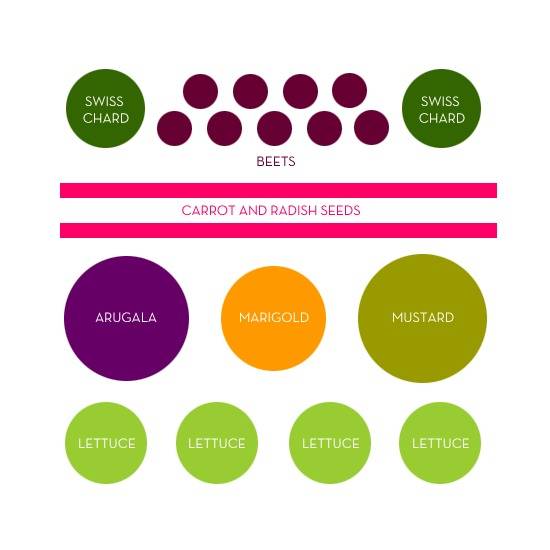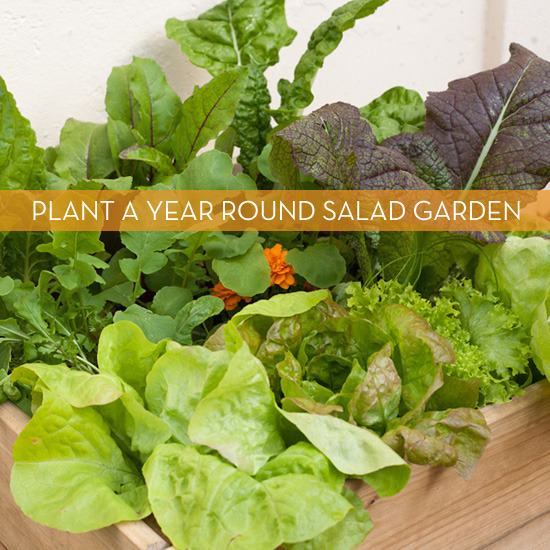As you may have gathered from my weekly “Foodie Friday” posts I enjoy cooking, but equally I enjoying growing my own food, which I write about on my site, curate this space.
Aside from the health and nutritional benefits of doing so, there is also something quite primal about knowing where and how your food is grown.
Today I’m going to teach you how to grow your own easy to grow salad garden which will grow all year round in frost free areas.
If you are new to gardening and growing your own here are a couple basic concepts you you need to grasp that will stand you in good stead for growing healthy plants.
SOIL: A balanced potting mix is 1 part sand, 1 part compost and 1 part peat. The sand provides drainage and also helps the roots bind down, the compost feeds the plants with good organic nutrients and the peat helps retain water. If you don’t want to make your own, that’s fine, most garden centers should have decent organic, premixed potting soil.
SUN: Most vegetables and herbs need a minimum of 6 hours of direct sunlight a day, fruiting plants closer on 9 hours. Several plants will grow in partial shade, including all of those listed in our project. You’ll want to position your container to maximize sun exposure, paying attention it doesn’t fall in a shadow cast from adjacent buildings or obstructions.
WATER: Sadly water isn’t an impirical measurement, but a yardstick I like to work with is to insert your index finger up to the second digit and gauge it. If the soil is moist, you’re fine, if not, water it! Likewise it’s easy to over water, so you want a good inch or two of drainage chips at the bottom of your container, this will make sure your roots don’t sit in water and rot.
With that out of the way, let’s get planting!
The garden above was designed to accommodate those living in small spaces, particularly apartment dwellers who may only have access to a sunny balcony so I’ve settled on a 2ft x 2ft container. If it’s built out of lumber you want to avoid CCA treated timber and use a naturally pest-resistant wood like cedar.
The idea is to maximize space by interplanting crops, basically a term used to describe growing a fast growing crop alongside a slower growing one. Our example here are the carrots and radishes. Radishes are ready to harvest in 3-4 weeks from sowing, where as carrots take 3 months, but both occupy the same space. Just mix the seeds together in small container and sow them together directly into the ground.
In the same way understanding plant spacing will maximize your harvest. Here we have our swiss chard on the edges of the container, these will grow up and out, allowing space below for a few beets. Beets are fantastic dual purpose crops as both the roots and leaves are edible, add the leaves to your mixed salads until they’re ready to harvest.
When choosing lettuces choose “cut and come again” varieties like cos, butter, oak. You’ll be able to cut the outer set of leaves and they’ll keep growing back, providing you 2-3 months of fresh, daily greens.
Another technique we use is companion planting, plants of a symbiotic or mutually beneficial nature. Many edible flowers fall into this category. I particularly like marigolds as they are not only edible but deter pests like sap sucking nematodes.
Below is the layout for a 2ft by 2ft box, the height can vary, but you need at least 7″ of soil.
Make sure the container has drainage holes and fill it up with an inch or two of drainage chips, then add your potting soil.
Follow the layout below for the plant spacing, when planting seedling you want to make sure you cover their roots adequately press them down firmly once inserted into your mix. Make sure you don’t bury your seeds to deep, I like to make a furrow 1/2″ deep and sow my seed, covering them loosely when done.

Once you’ve planted up your container, water it with a watering can and allow nature to run it’s course.
If planting from seedlings I’d wait at least 2-3 weeks before you start harvesting and 6-9 weeks if planting from seed.
Now you can enjoy your own bounty throughout the year, fresh from the garden, or your inner city apartment.
